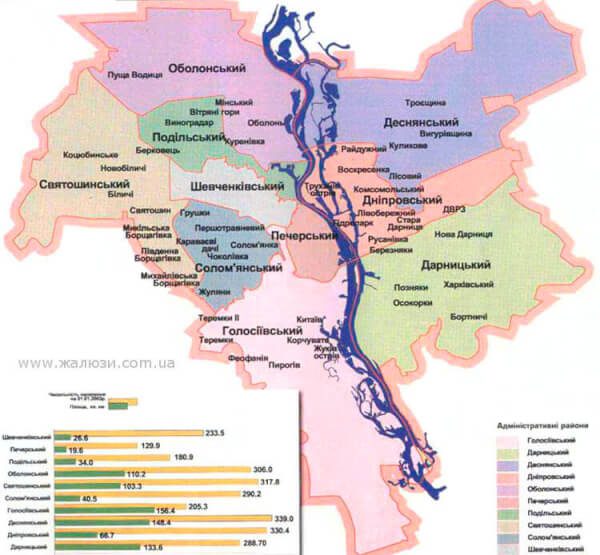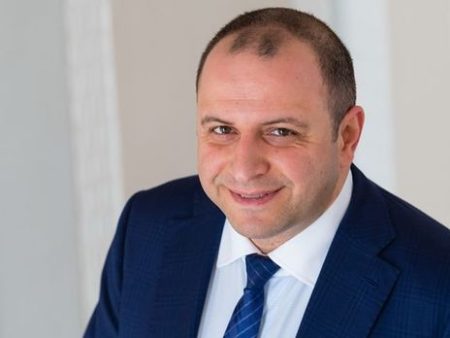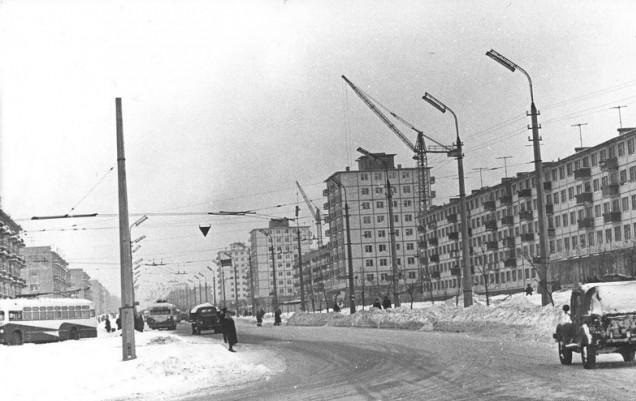
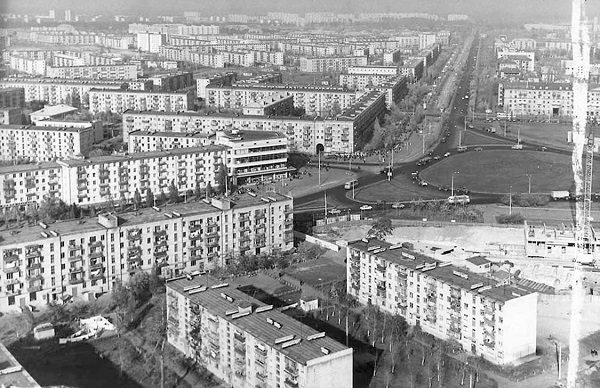
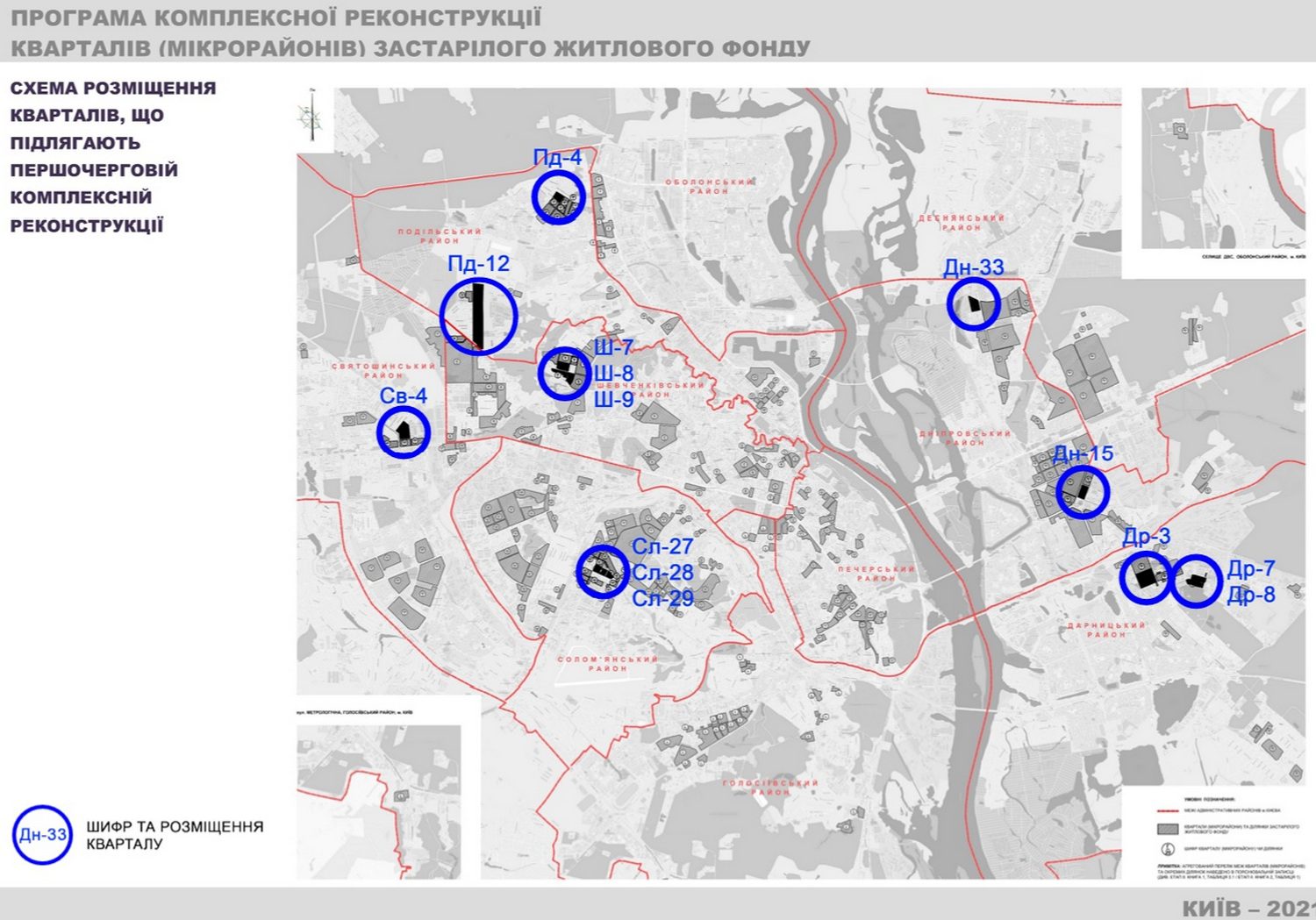
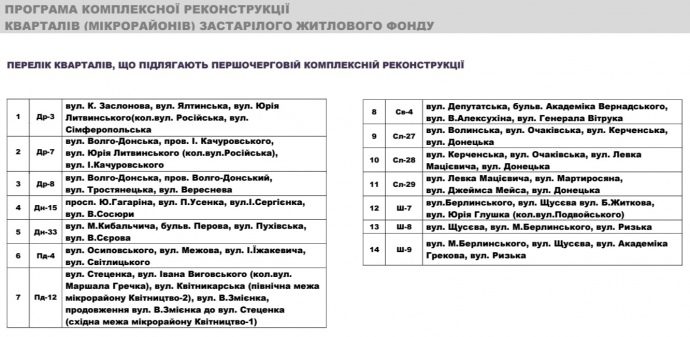
Khrushchev – a cause to clean the money of the people of Kiev
Kyiv city authorities have approved a plan to fix rundown houses. Only half a billion hryvnias are allocated for their examination. Is it wise to do this during the war?
In December 2022, the Kyiv City Council authorized the “Program for the Comprehensive Reconstruction of Microdistricts of Outdated Housing Stock”. It has been in the works for five years. EP.
The document presents different options for renovating apartment buildings constructed during the large-scale industrial building of the 1960s and 1970s.
Choices include renovating with added floors, compacting houses within a block, or demolishing them and constructing new ones.
This is not the first attempt by the city authorities to approach the issue of housing renovation.
In 2006, the then mayor of Kyiv, Leonid Chernovetsky, suggested relocating the residents of Khrushchevs to temporary housing in order to demolish old houses and build new ones in their place.
In 2011, under the leadership of Alexander Popov, the Kyiv City State Administration (KSCA) reportedly found a foreign investor willing to invest 400 million euros in the demolition of Khrushchevs on Nyvky and the construction of 12-16-story buildings instead.
The foreign investors turned out to be Russians, and the procedure they proposed mirrored the city’s plan for the renovation of quarters with 5-story buildings. The trial program was not put into action.
The new program planning was approached comprehensively.
The developer categorized the types of old houses, offered various options for reconstruction and financing of work, and identified neighborhoods that could be the first to undergo construction by builders. However, the developed document also has areas that are not fully specified.
Khrushchev. What is the program
March 3, 2016 Kyiv City Council (KSC) directed the Department of Construction and Housing of the Kyiv City State Administration to draft a “Program for the renovation of obsolete housing”.
The city’s deputies justified their request by the need to comply with the provisions of the outdated Kyiv Development Strategy until 2025. Its KGR was approved in 2011 at the request of the then head of the Kyiv City State Administration Alexander Popov.
In 2017, the Department of Construction and Housing of the KSCA commissioned the private company Institute of Urban Studies to develop this program. The institute is linked to one of the major Kyiv engineering and design companies Terra Project.
By andinformation publications “Our Money”, Terra Project is associated with the Kyiv developer Andriy Vavrish. Vavrish himself in an interview EP denies any involvement with this company.
The Institute of Urban Studies spent three years working on the development of the program. Finally, in 2022, the city council approved the document.
It comprises an analysis of the structure of the obsolete housing stock in Kyiv, a list of priority objects to be renovated, and potential methods for its implementation.
The implementation of the program contains many stages.
First, the delineation of the territories for the complex reconstruction of microdistricts of obsolete housing and furnishing them with characteristics. Then, a visual examination of buildings and determination of the sequence for carrying out the reconstruction.
Yulia Yarmolenko, a member of the permanent commission on housing and communal services and the fuel and energy complex of the KMR, believes that speeding up the comprehensive solution to updating old housing in the capital will modernize the infrastructure and save budget funds.
The old housing is worn out and needs to be rebuilt because the engineering networks are in poor condition, it's not suitable for people with limited mobility, it's not energy efficient, it doesn't meet insulation standards, and the territories are not used efficiently.
Yarmolenko thinks that carrying out a comprehensive reconstruction of facilities is more effective than doing spot repairs.
The initiators of the plan explain in the accompanying note that the current real estate market conditions require an increase in the economic efficiency of urban areas.
How many obsolete housing in Kyiv
According to the Kyiv Main Statistics Department, at the end of 2019, there were 63.5 million square meters of housing in the capital, or 1.082 million housing.
In 2006, the Verkhovna Rada adopted lawwhich defined obsolete housing as houses that, due to their technical condition, do not meet modern regulatory requirements for safe and comfortable living and whose service life limit has ended.
Houses where the wear of the main structural elements exceeded 60% could also be considered obsolete. The law also covered housing that was recognized as dilapidated or dilapidated (depreciation of the elements of the house reached 60-80%).
1966, Nivki
The developers of the program divided the entire obsolete fund of Kyiv into four types.
The total area of only “Khrushchev” in Kyiv is 9.025 million square meters (14.2% of all housing). 21% are panel houses, 46% are brick houses, and 33% are large-block houses.
According to the draft decision, there are 5,395 obsolete houses in Kyiv with a total area of 12.3 million square meters. The total population living in them is 566.7 thousand people.
However, the EP construction department provided other figures. According to the KSCA, the total amount of obsolete housing stock is 4,948 houses with a total area of 11.1 million square meters. Despite the decrease in area, the number of residents, according to the department, has increased and amounts to 576.9 thousand people.
Why such a discrepancy? The fact is that these figures were obtained by preliminary calculations.
The authors of the program believe that in Ukraine the real life span of buildings from the first period of industrial housing construction cannot exceed 50-70 years, even under the most optimistic expectations.
Darnytska Square, mid-1960s
The construction department says that the Khrushchevs have exhausted their service life and are in an unsatisfactory technical condition. However, these conclusions are not supported by any evidence, as the evaluation of houses is the initial stage of the program that has not yet started.
By the way, the operational resource for 'Khrushchev' (50-70 years) and 'stalinok' (125-150 years) refers to the wear of engineering communications, not the structural elements of buildings.
The State Statistics Service has its own methodology for determining old housing, which differs from the one proposed by the program developers.
According to her, in Kyiv, only 0.5% of those given by the Kyiv administration were counted as emergency or dilapidated housing: 55.6 thousand square meters. m, where 1.1 thousand people live.
What will they do with the 'Khrushchev'
The Institute of Urban Studies proposes to reconstruct all 256 blocks of obsolete housing. At the first stage, builders will take on 15 blocks in different districts of Kyiv, 250 houses in total.
The profile department of the EP reported that it was not only about 'Khrushchev', but also about 'Stalinka' and barracks. They were selected based on the criteria for having approved 'Detailed Territory Plans' and the absence of planning restrictions.
Khrushchev – a reason to launder the money of the people of Kiev
Khrushchev – a reason to launder the money of the people of Kiev
The authors of the program proposed four methods for transforming old housing into new.
The reconstruction method will be selected for each quarter separately from investment projects and taking into account the results of a technical survey of buildings and structures, their energy audit and technical and economic calculations.
Based on the experience of Estonia, Poland, East Germany and Russia, the authors of the program indicate that the cost of renovating houses will be 30-70% of the cost of new housing, that is, it is cheaper than building houses.
The developers of the program believe that the reconstruction of quarters of obsolete housing stock as a method of secondary development of the territory allows saving not only the financial, but also the spatial resources of the country, since 'it makes it possible for cities to develop without expanding their territorial boundaries and developing new suburban spaces.'
The Institute of Urban Studies offers to finance the program with the funds of developers, mortgage loans, money from construction and savings banks, a resource from increased taxes on real estate, income from the issuance of bonds by local governments, and depreciation deductions.
The city authorities expect that the financing of the program will be undertaken by private investors. However, the decision recently voted by the Kyiv City Council does not contain the 'Procedure for holding investment competitions'.
Khrushchev. Program gaps
The adopted program contains flaws and conflicts that cast doubt on its relevance and expediency.
In particular, it is not clear why during the war with Russia it was necessary to put this draft decision on the agenda. Director of the Department of Construction and Housing of the Kyiv City State Administration Boris Rabotnik also found it difficult to answer this question.
The main regulatory act that will make it possible to implement the program is the law 'On the Comprehensive Reconstruction of Blocks (Microdistricts) of Obsolete Housing Stock', adopted in 2006.
For the past few years, the government has been writing new edition this document, but has not yet completed this work.
According to one of the former deputy ministers for the development of communities and territories, builders did not lobby for a new law on the demolition of “Khrushchev” buildings, because in large cities there were enough free plots for development for at least five years.
The interest of developers was focused mainly around agricultural land and industrial zones in cities and their environs. Business mainly promoted tools for changing the purpose of these land plots.
“Accumulated capital and a stable demand for new apartments are needed to launch a large-scale renovation program for Khrushchevs. Now there is neither the first nor the second”, — said the interlocutor of the EP in the government even before the war.
Khrushchev – a reason to launder the money of the people of Kiev
The Department of Legal Support of the KMR indicated that the new version of the law provides for a significant change in the procedure for the reconstruction of quarters. Therefore, the program prepared on the basis of the law of 2006 may lose its relevance.
When asked why the Kyiv city authorities decided to develop a program based on an outdated version of the law, without waiting for the adoption of a new document, the Kyiv City State Administration did not answer either.
UAH 100,000 will be allocated for the examination of each house and determination of their technical condition. Thus, the total estimate of the first stage of the program will be at least UAH 494.8 million.
Officials plan to use these funds until 2026, and they promise to start reconstruction in four years. In 2023, the KGR deputies are asking to allocate UAH 15 million for the program, but these funds are not provided for in the city budget.
The Department of Construction and Housing promises to begin a technical inventory of houses immediately after the allocation of funds from the budget.
Alexander Kolesnichenko, translation Skeleton.Info
DOSSIER: Vyacheslav Nepop: “flayer” from the construction mafia in Kyiv. PART 1
